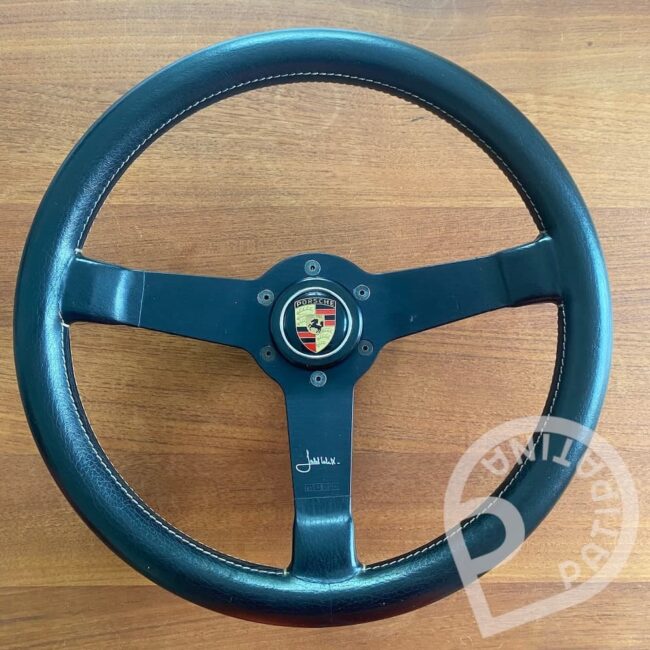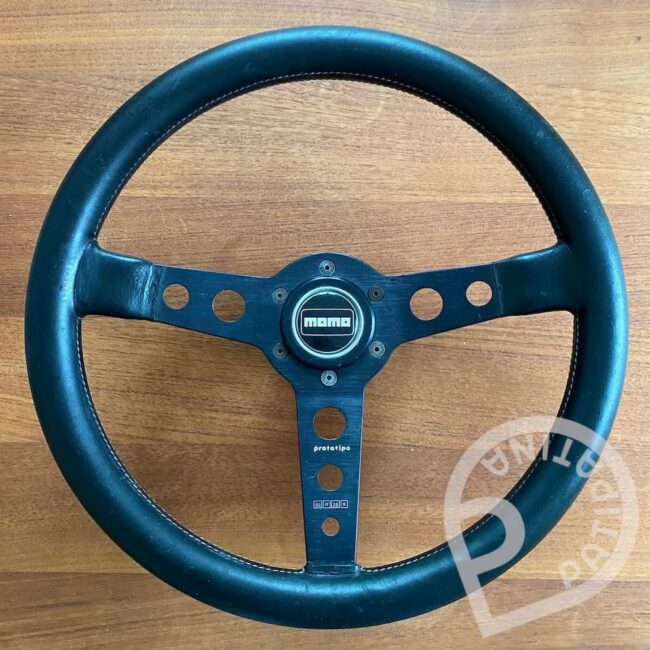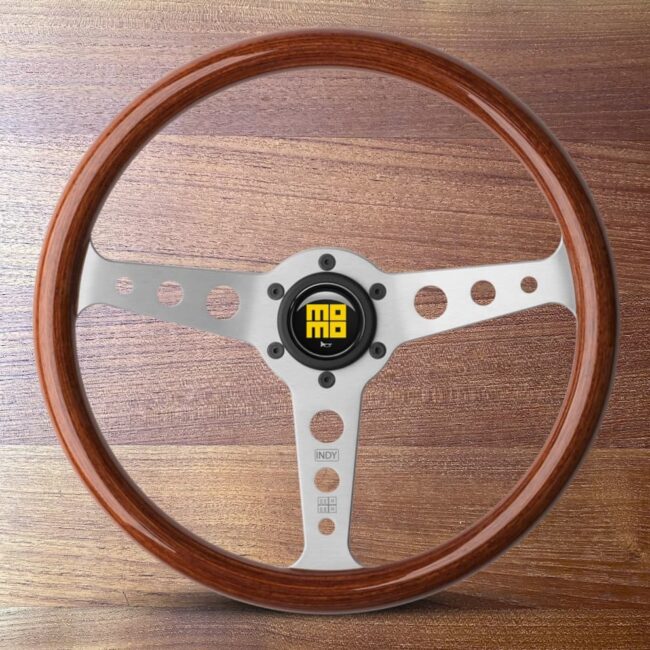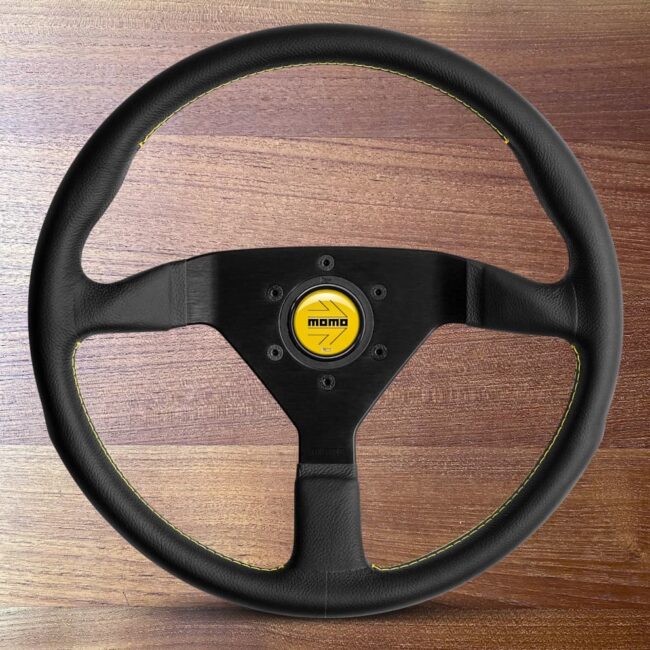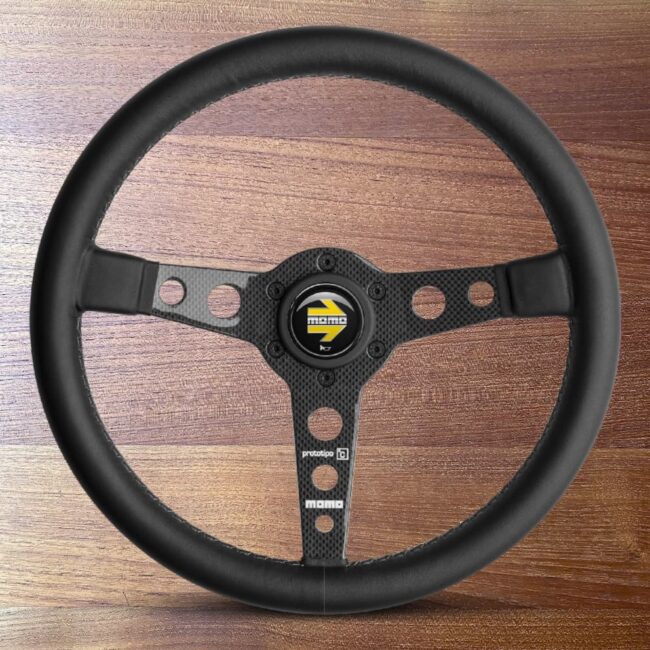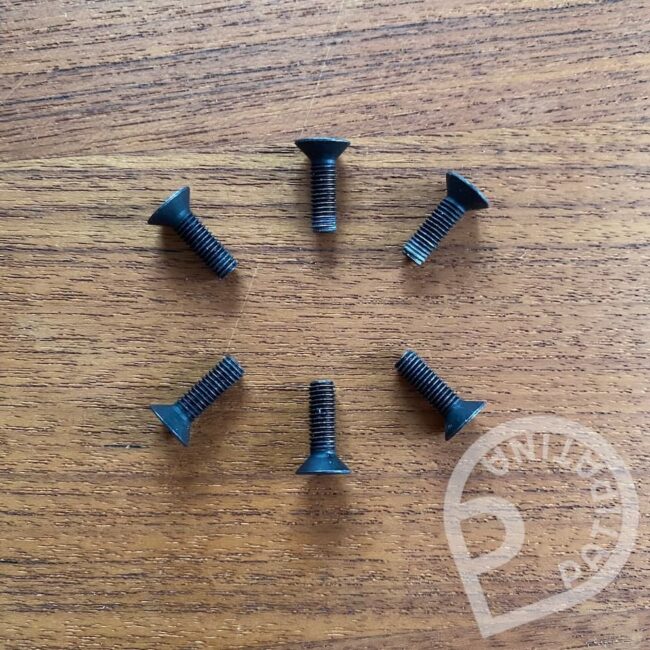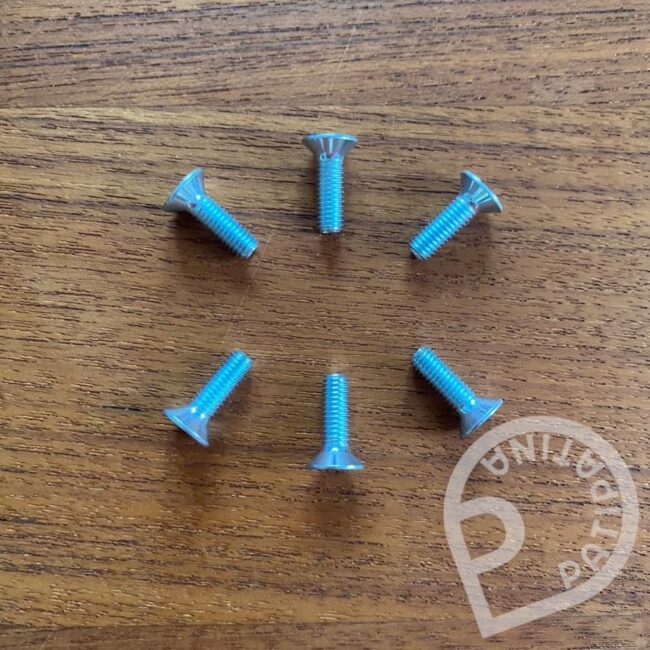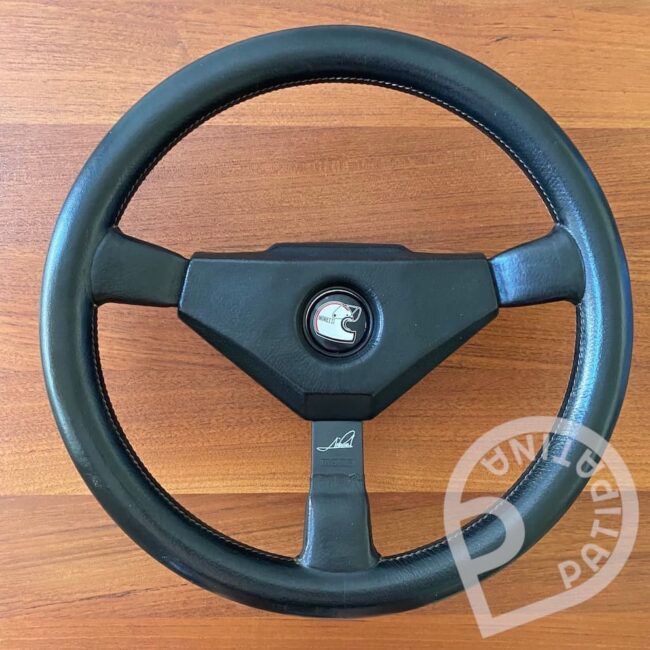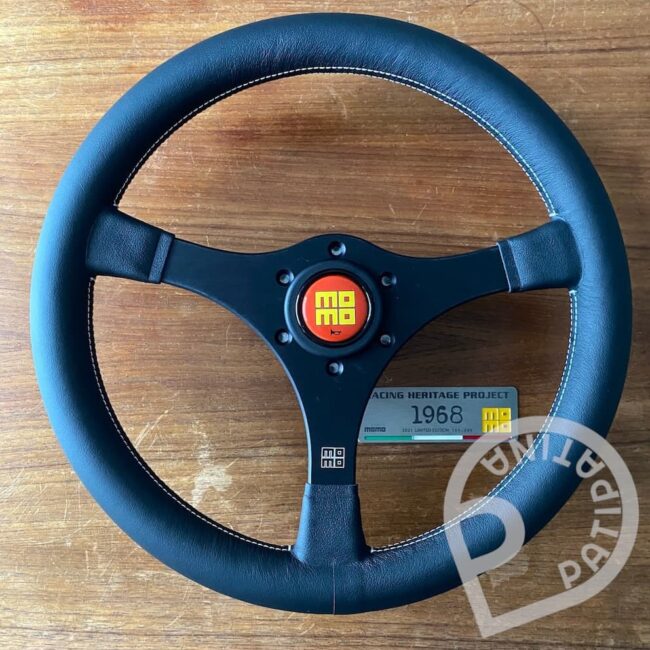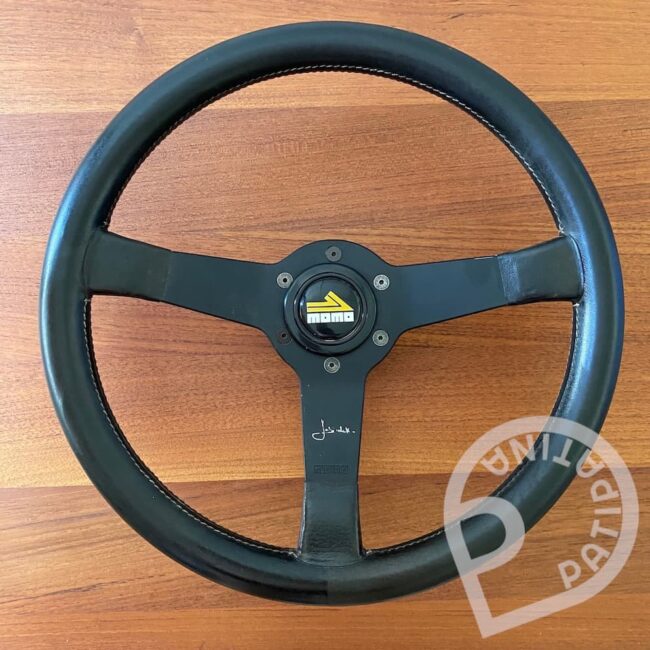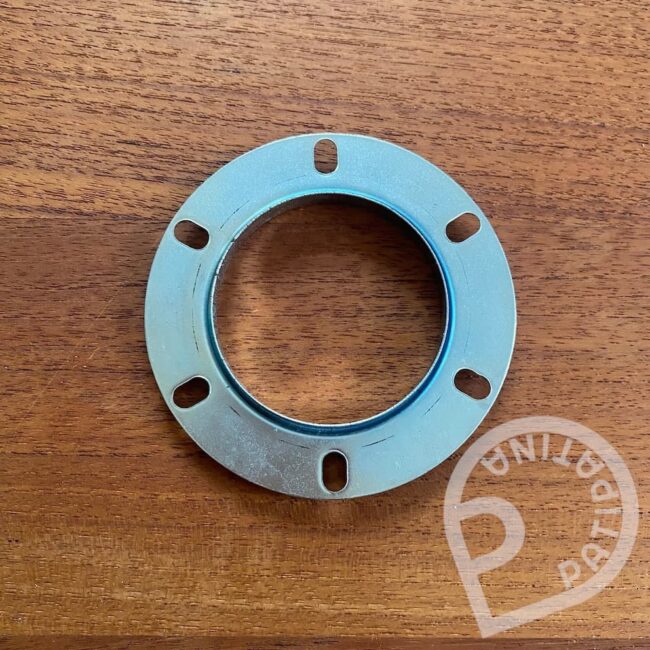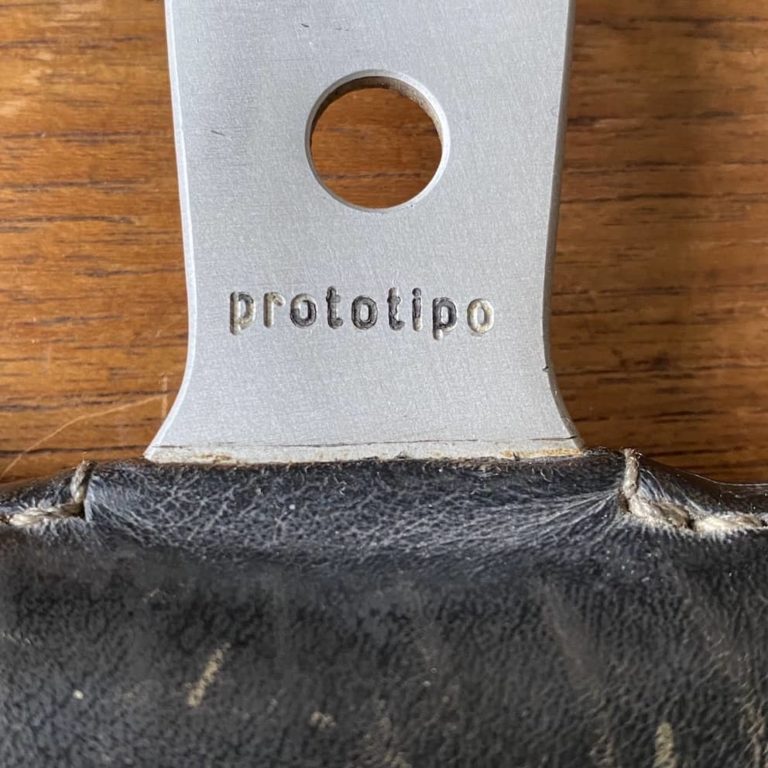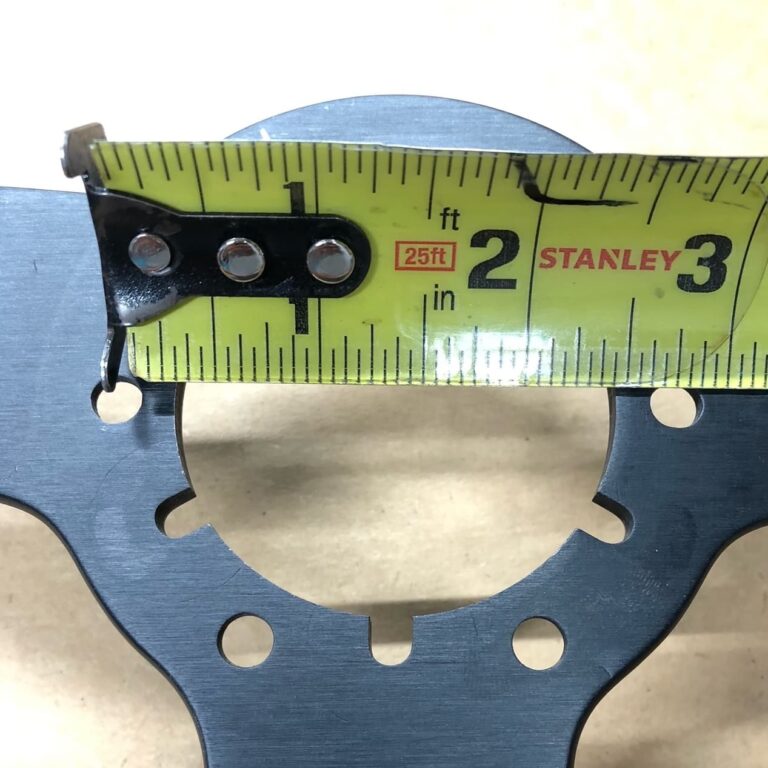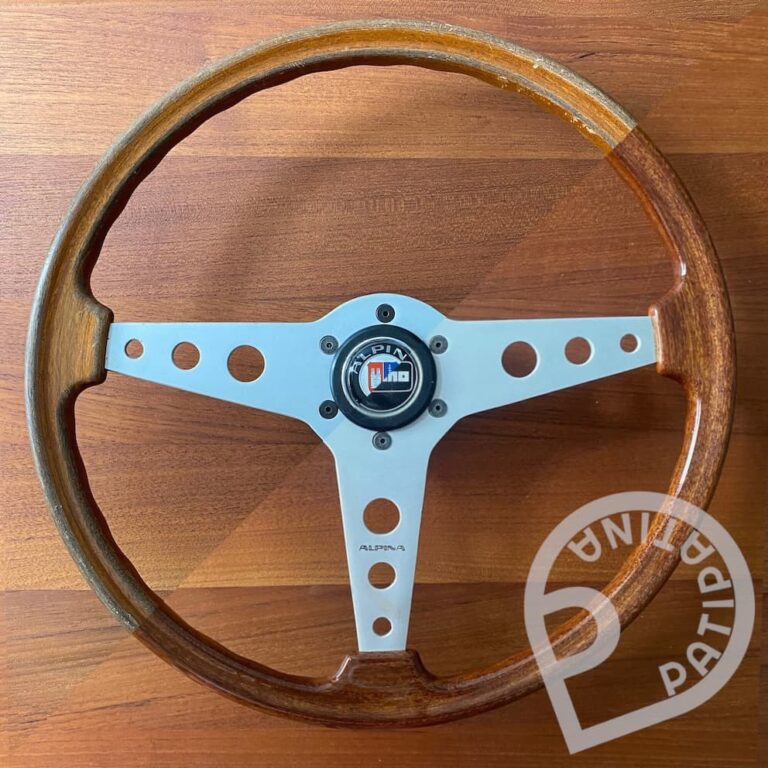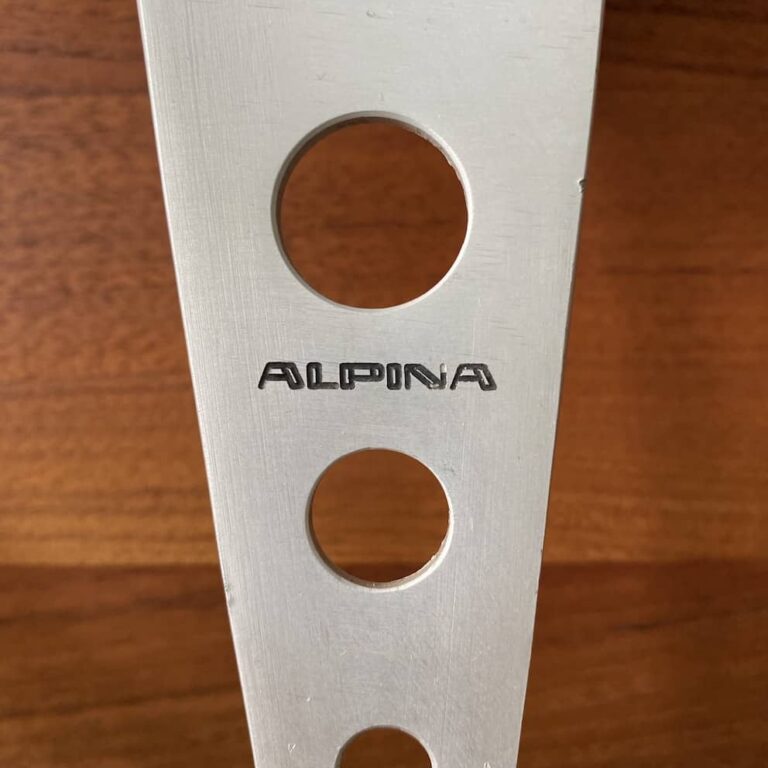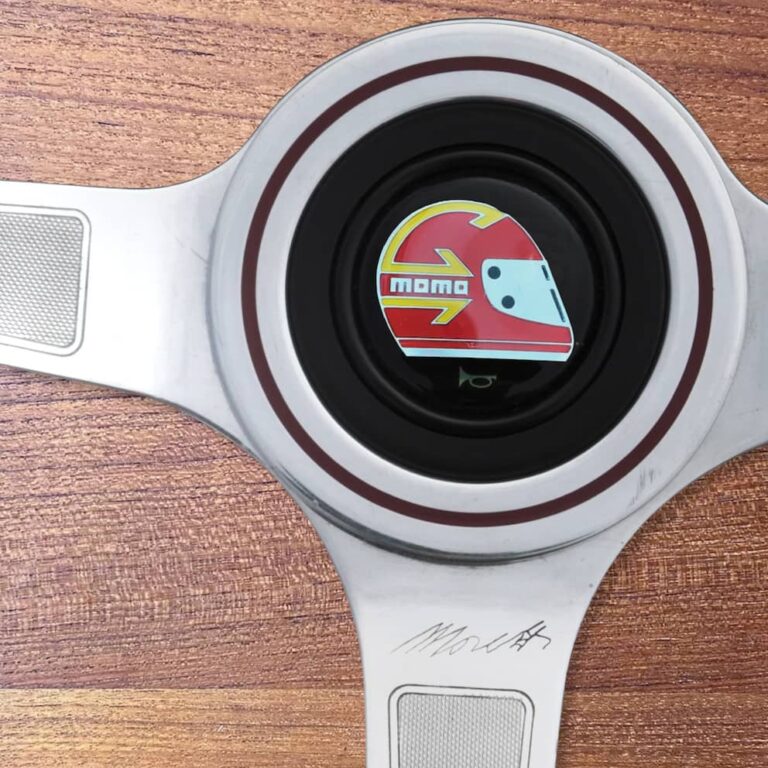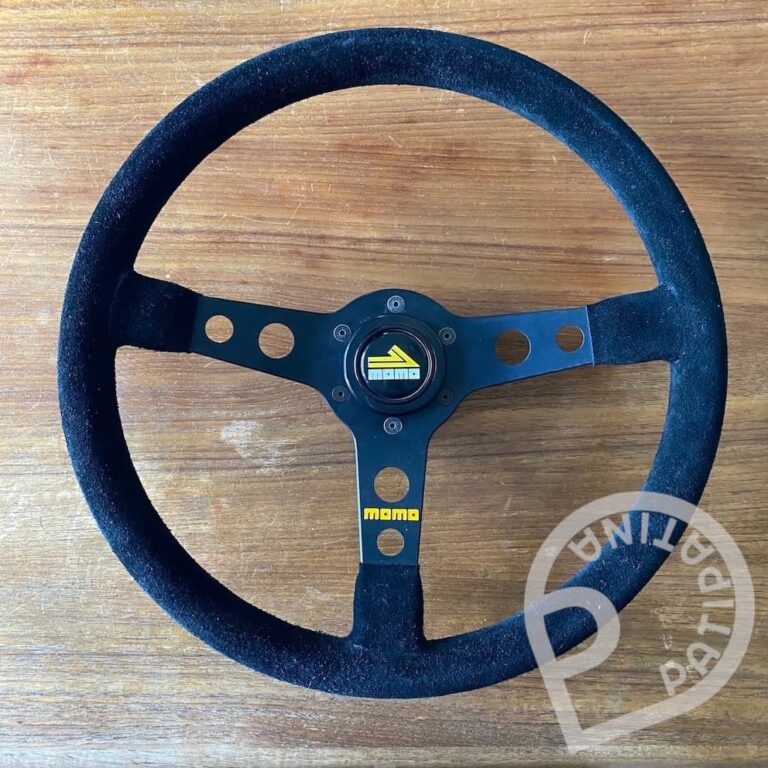MOMO SCIONERI STEERING WHEEL
Early GT style Momo steering wheel
In addition to Momo’s actual product range, Momo also made special steering wheels – like the Momo Scioneri steering wheel – for car manufacturers or converted steering wheels from the actual range for car manufacturers. The most well known ones are certainly the steering wheels for Ferrari (e.g. Ferrari 308), for Lotus (Lotus Esprit Commemorative S2) or also steering wheels for Porsche, Alfa, Alpine – and of course Abarth.
As Amazon Associate I earn from qualifying purchases. I may receive a small commission at no additional cost to you for purchases made through links in this post.
Very much known is the Momo signature series, steering wheels with the autographs of famous racing drivers from Formula 1 with special helmet horn buttons, e.g. the Momo Clay Regazzoni steering wheel, the Momo Jacky Ickx steering wheel, the Momo Ronnie Peterson steering wheel to name a few.
It is less well-known that Momo has also produced special steering wheels and horn buttons for smaller coachbuilders and tuners, in some very very small numbers, which make them very special among collectors. A lot of people might have heard of Techart, but have never seen the Momo Techart steering wheel and horn button. Fiat connoisseurs of course know Scioneri but most likely never had a Momo Scioneri steering wheel in their hands.
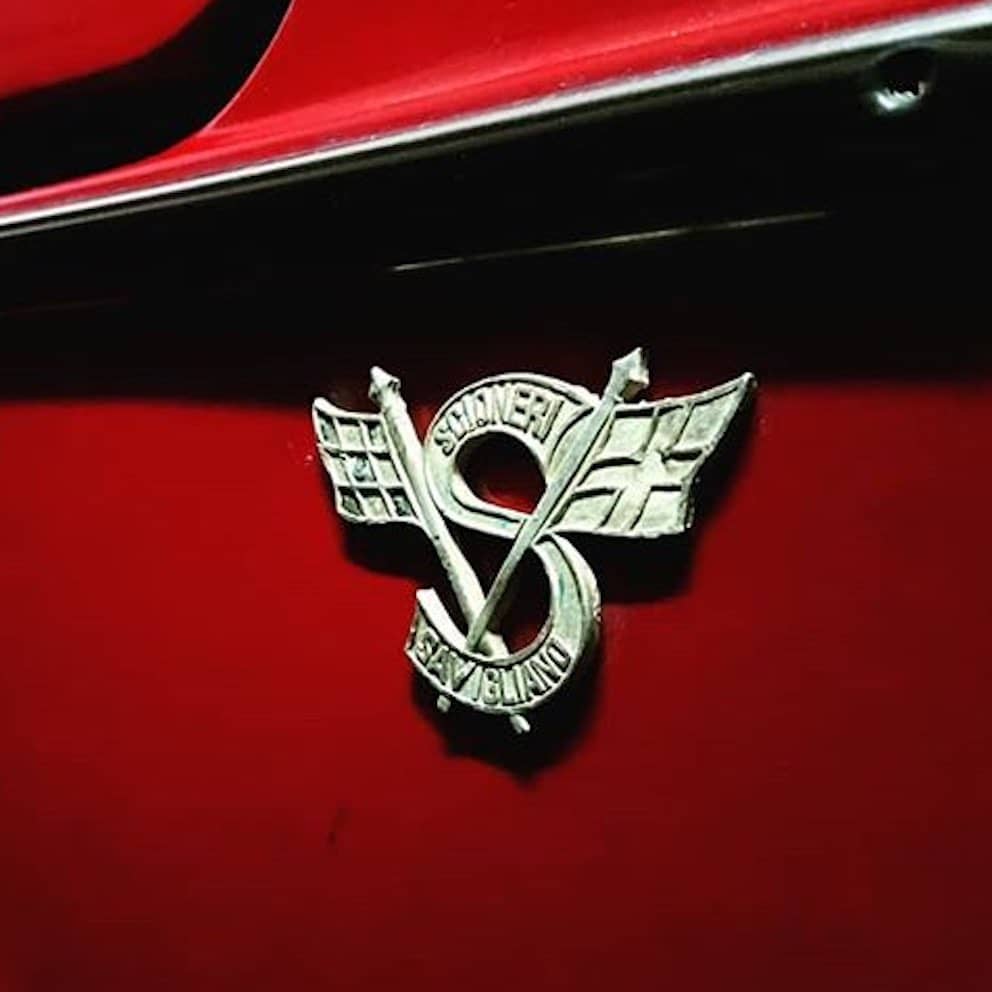
Scioneri Logo, front fender of a Scioneri Fiat
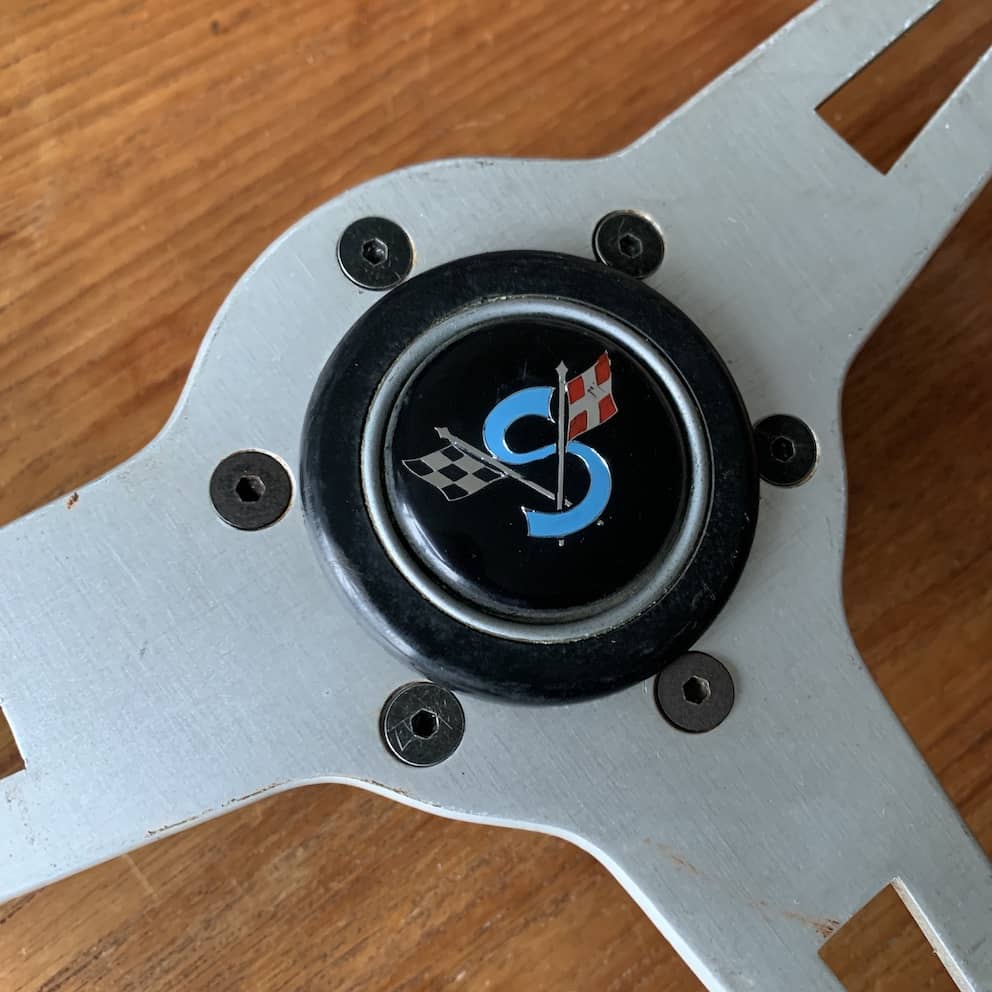
adapted Scioneri logo on a Momo Scioneri horn button
Momo produced three different designs for Scioneri, first one was a two-spoke wooden wheel with round holes, most likely 350mm in diameter. Second one is the pictured three-spoke wooden wheel with 370mm in diameter whose design is based on the early Momo GT steering wheels. Just like the 320mm version of the Momo Scioneri steering wheel.
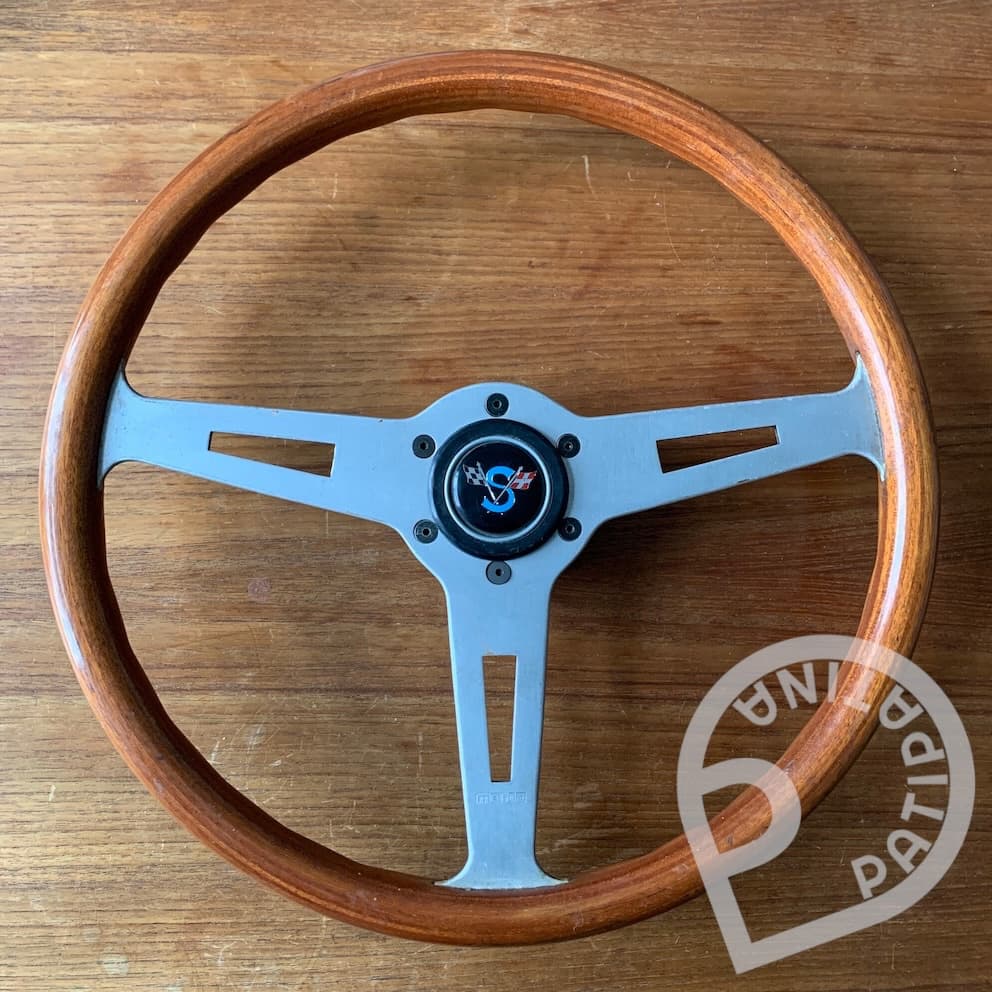
Momo Scioneri steering wheel, 370mm
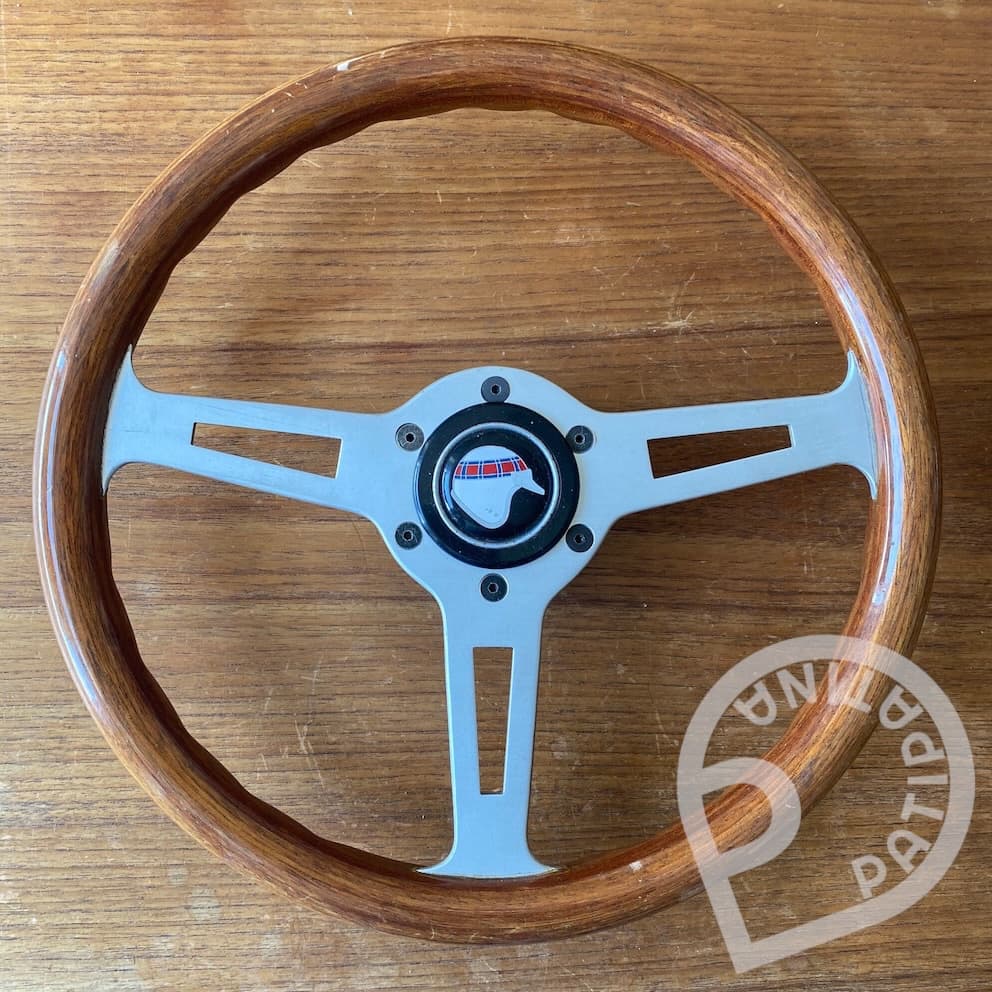
Its little sister, flat Momo Scioneri steering wheel, 320mm
Momo, Abarth and Scioneri
The design is reminiscent of the Abarth steering wheels with the slotted design and maybe it is even intentional, due to a certain relationship between Fiat and Abarth.
At first sight, it also looks a bit like an early but modified Momo Indy. But even though the flat design and finger grips might look the same, but a closer look reveals that the position of the finger grips and the depth is not the same – and even more showy, the profile of the steering wheel is totally different compared to the early Momo Indy steering wheel. While the Momo Scioneri steering wheel has a round profile, the early Indy has a shaped profile with a concave edge.
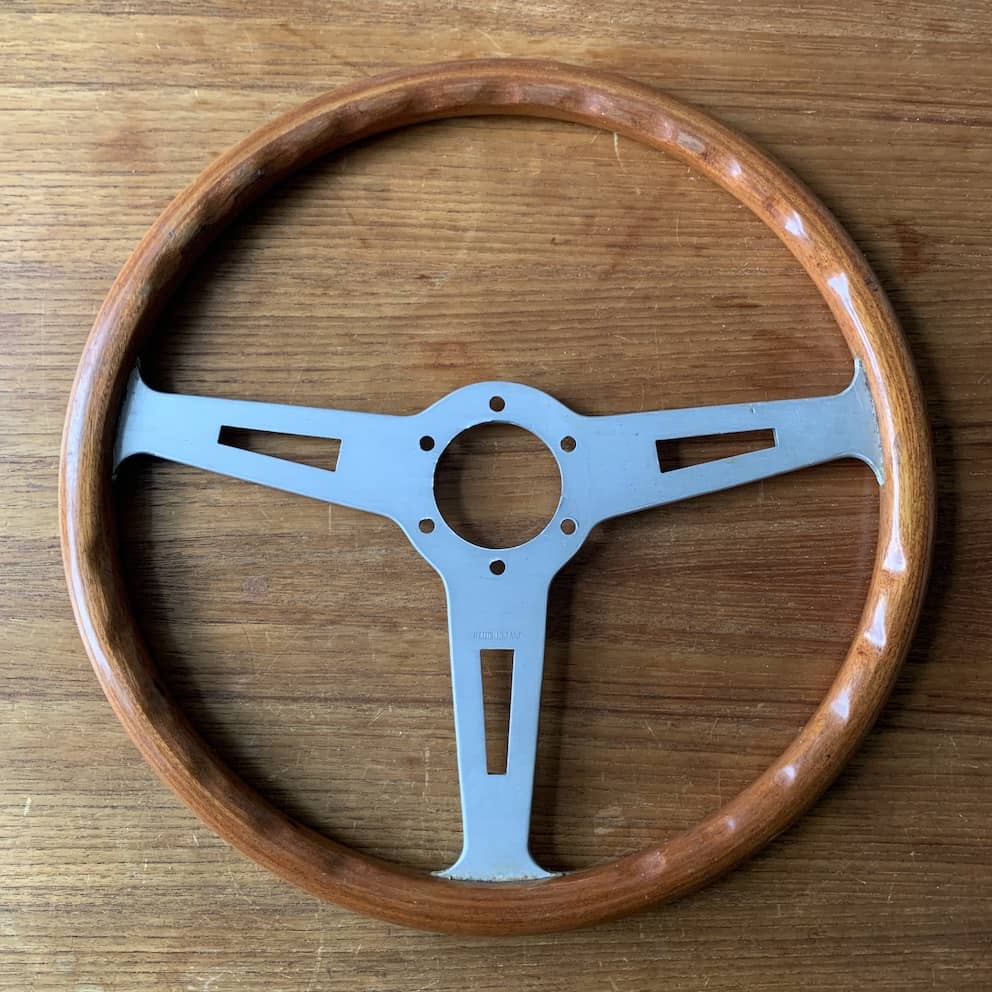
back of the Momo Scioneri with partial finger grips
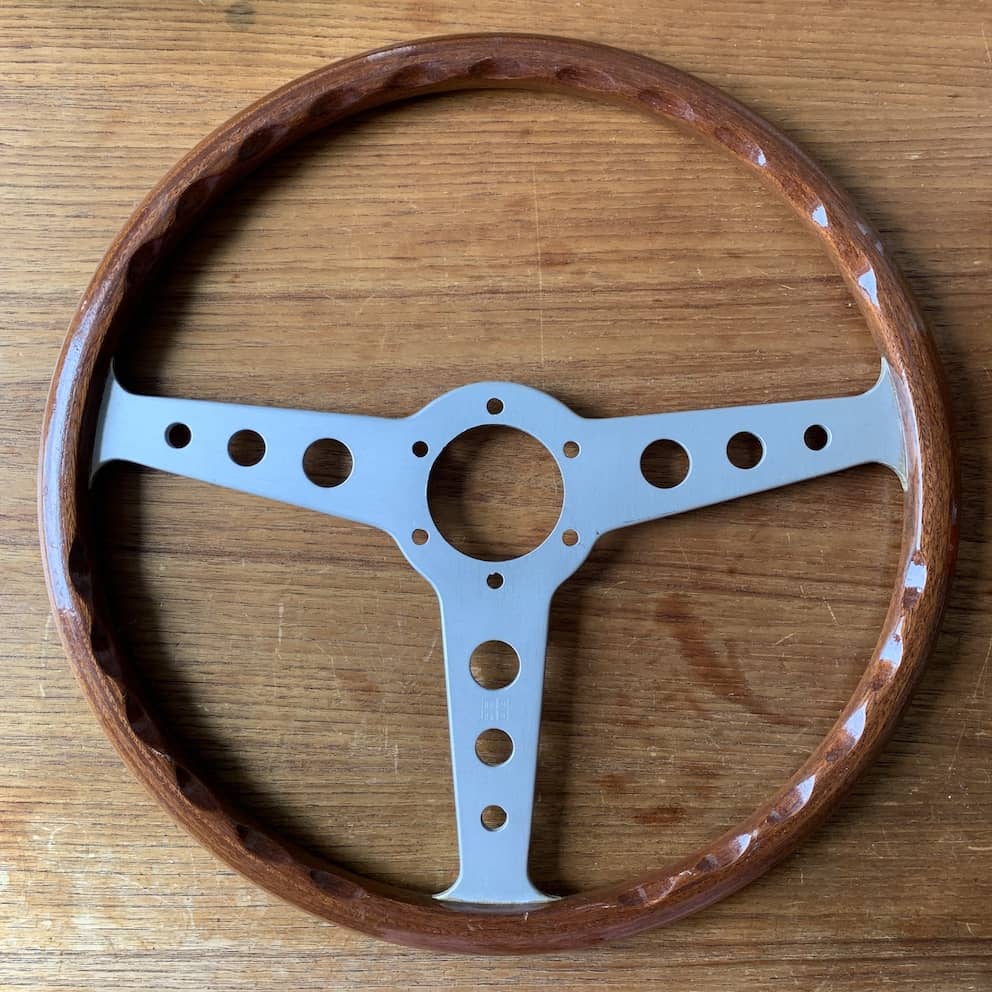
back of the early Momo Indy (68-73), 370mm
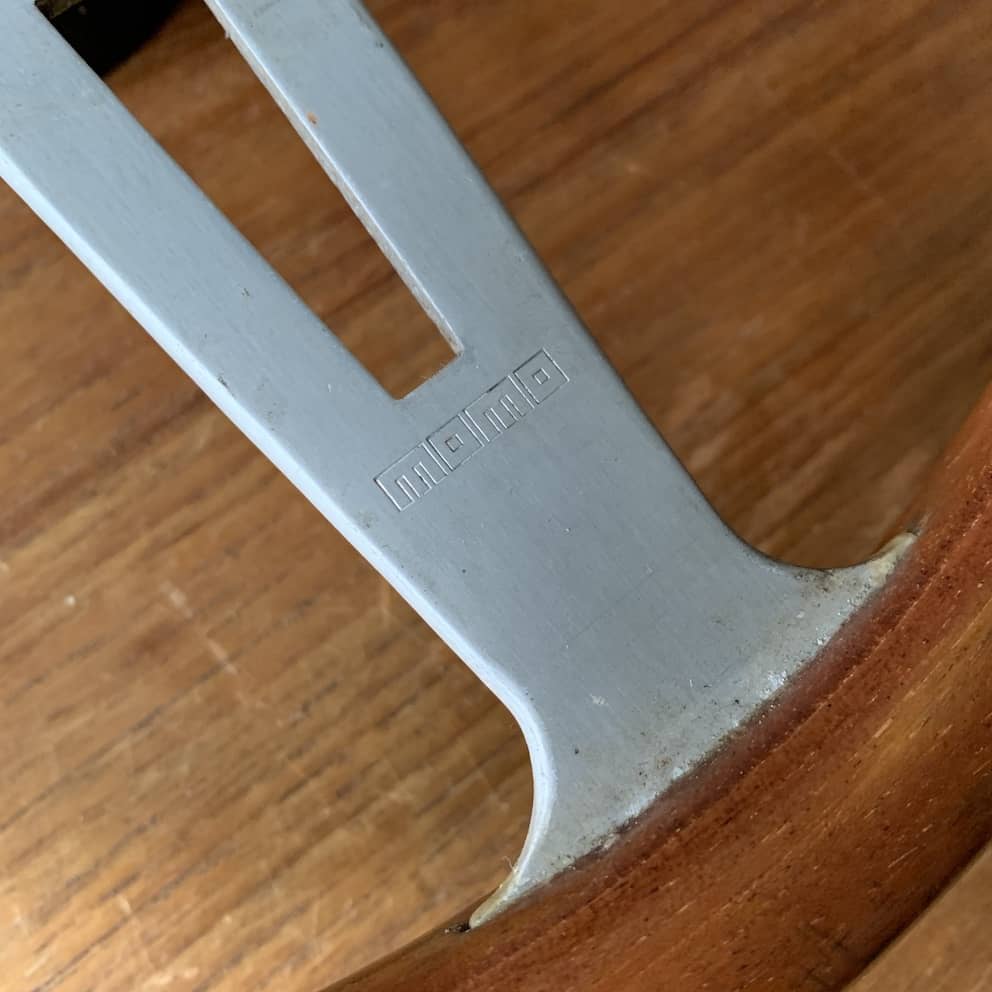
no other marking besides the Momo logo
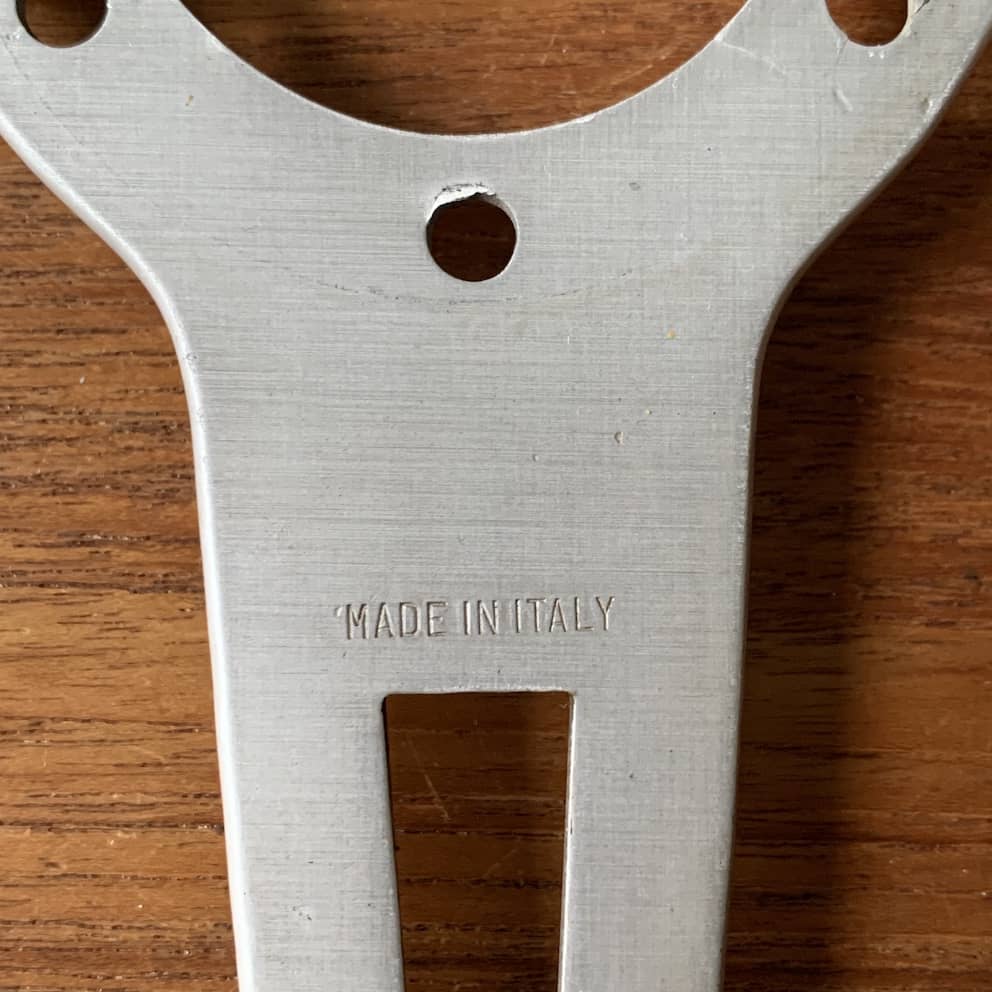
Made in Italy – from the early part of the 1974-1976 period
In the early 1980s, Momo did another steering wheel for them, a full-black-leather 360 mm diameter one with a red stripe across the horn pad.
About the Carrozzieri Scioneri
Scioneri was an italian coachbuilder. It has been founded in 1943 as a mechanical workshop, in the early 1950s they started upgrading and/or modifying cars and in the 1960s they even manufactured their own body designs based on Fiat platforms (and some for Lancia). Most designs came from Michelotti who developed six models for Scioneri with the typical Michaelotti touch: chrome accents and clear and well proportioned lines and in some aspects a lineage to the BMW 1500, the design of the car that Michelotti worked on as well. The signature touches of Scioneri remained until Scioneri decided to no longer produce their own bodyworks: dual-tone paint, special dashboard and a very special steering wheel.
It all started with the first model at the Turin Motor show in 1957, a car derived from the Fiat 1100, called the “Fiat 1500 Coupe Sportinia”, a car between a sedan and a coupe. Only 20 of those have been made back at the time. In the following years, with the help of Michaelotti, Scioneri built a number of different models, deriving from the Fiat 1100/1200 in 1958, the Fiat 1300/1500 in 1961, the famous Fiat 600D in 1963, the later Fiat 850 in 1964 and the Fiat 124/125 from 1966 to 1968. Even though Scioneri didn’t do a special bodystyle for the Fiat 500 platform, they customized the tiny Fiat 500 icon over the years which is the most known version among the Fiat Scioneri models.
Those were the most remarkable years in the era of Scioneri. From 1969 onwards, Scioneri no longer did their own bodyworks but continued modifying existing Fiat production until 2005.
